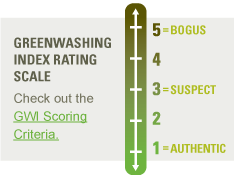I am lucky enough to be taking a class at the University of Oregon focusing on the idea of Sustainability and learning the insights of communicating the idea of green issues. Before this class my knowledge of the following was little to none:
Green-washing advertising
Strategic green messaging and planning
Resources of business and brand knowledge of sustainability and where to find it
Specific companies and products focusing on bettering the environment
This got me thinking of why and how I had never heard of such trends, even growing up to be aware of energy efficient living, and paying attention to where things are made. Education in these areas are something that should start at a young age in order to get the message across that the way we consume highly impacts the direction of the environment and it’s impact on our planet.
Most parents would say that their concern for Eco-system and global environment awareness would be for their children. Making this planet a place where generations to come can enjoy and use the land and environment to better sustain their way of life is something of a movement that needs to happen to make this message clear.
A few ways this is happening:
NAAEE (North American Assoc. for Enviornmental Education)
+ Teaching people how to think about the environment, not what to think. Making a difference in the world through a positive, non-confrontational approach.
EPA (Environmental Protection Agency)
+International agency focusing on the health and environment communication for all individuals.
+Government involvement of protecting human health and the environment, by writing and enforcing regulations based on laws passed by Congress
WHY THIS ISN’T ENOUGH:
Children and young adults do not relate to problems or organizations bigger than they are. It would take a extremely curious young person to do the research in understanding everything that these agencies are telling them. The focus, however should be on simplifying the message of sustainabilty and the resources used to learn about them on the level of elementary, high school and collegiant levels.
Understanding:
Green-washing 
Energy used around the house hold
Effects of how you live have on our environment
would have a large impact on younger groups of individuals in the private and public school systems. I advocate for this education lesson to be taught in all schools to further and increase the movement of sustainable living with in future generations. All it takes is the knowledge of this imformation to be implanted on people at a young age, encouraging to make a difference themselves. Bombarding older generations with statistics and messages to change a life style that they have always been living is less effective then creating a postive message of caring about our environment to younger generations.
The longevity of this issue of sustainability and the way people live their lives is the most important in making an actually difference to our planet. Creating a platform, arena, or career path for young adults to get involved with sustainability will only benefit the climate and enviornment we so greatly want to protect.














